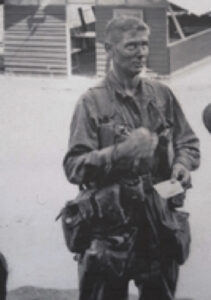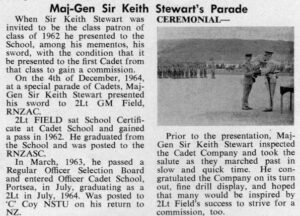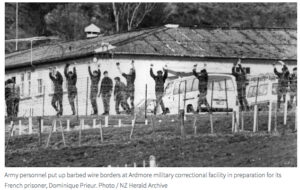
August – red and blues
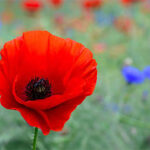 Having been raised in an Anzac country, I’ve never been able to resist images of poppies, so when I read that the birthday flowers for August are the poppy and gladiolus, I went looking. Other facts about August are that it includes National Watermelon Day and National Smile Week, it has two birthstones: peridot and sardonyx, and is the eighth month of the year in the Julian and Gregorian calendars. It was originally named Sextillis (no, not because of that, but because it was the sixth month in the ancient Roman calendar).
Having been raised in an Anzac country, I’ve never been able to resist images of poppies, so when I read that the birthday flowers for August are the poppy and gladiolus, I went looking. Other facts about August are that it includes National Watermelon Day and National Smile Week, it has two birthstones: peridot and sardonyx, and is the eighth month of the year in the Julian and Gregorian calendars. It was originally named Sextillis (no, not because of that, but because it was the sixth month in the ancient Roman calendar).
During our Cadet days, I suspect it was the month in which the most AWOLs took place – we all had the home-town blues waiting for Waiouru’s long, hard winter to pass and those who couldn’t last until August leave, took off early, or didn’t get on the train to come back, or didn’t get off it when it reached Waiouru Station. In 1965, my diary reminded me that on Wednesday 4th August, Tiny Hill put the whole School on the backs of RLs and took the convoy down to Wanganui to watch a combined Wanganui-King Country side play the touring Springboks (the ‘Boks won 24 – 19). We were handed a brown paper bag lunch as we got on the trucks and most of us had scoffed it by the time we reached the main road south. Then we donated it back to the environment when we hit the first hairpin on the then unsealed and un-reconstructed Mangawekas. I suspect there were one or two who seized their chance for an early August break and didn’t rejoin us for the trip back. The School year-books for 1964-66 all report the Junior Services Rugby Tournament being held around the middle of the month – Auckland ’64, Waiouru ’65, Woodbourne ’66.
In case you were wondering, a 2017 study found that kids born in August are taller and more optimistic than everyone else. They were also more likely to be incarcerated for a juvenile crime. The study was conducted in the UK and suggests that some of the findings could be attributed to pregnant women getting more Vitamin D in the summer months. Of course, in the Southern Hemisphere that would make February the equivalent to August, so don’t get too excited all you Leos and Virgos.
Tribute – One of our own
Bill Lillicrapp, MBE, Stewart Class
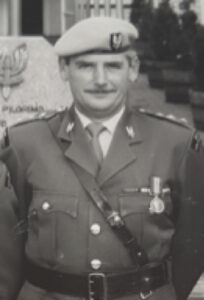 Captain and Quartermaster William (Bill) John Lillicrapp was born in Queenstown on 22 October 1943. Bill initially enlisted into the Territorial Force with the 1st Battalion, the Otago/Southland Regiment in 1959. He was able to enlist into the TF at such a young age because he did so as a bandsman. Bill was discharged from the TF when he enlisted into Stewart Class of the Regular Force Cadet school in January 1961.
Captain and Quartermaster William (Bill) John Lillicrapp was born in Queenstown on 22 October 1943. Bill initially enlisted into the Territorial Force with the 1st Battalion, the Otago/Southland Regiment in 1959. He was able to enlist into the TF at such a young age because he did so as a bandsman. Bill was discharged from the TF when he enlisted into Stewart Class of the Regular Force Cadet school in January 1961.
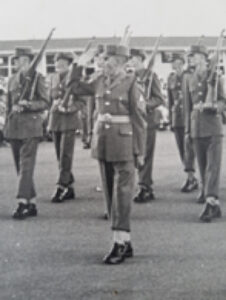 Bill graduated into the New Zealand Regiment in 1962. In August 1963 he was posted to the Reconnaissance Platoon of the 1st Battalion, The New Zealand Regiment in Terendak Camp, Malacca, Malaysia, as a Section Commander. In this role Bill saw Active Service on the Malay-Thai border and in Pontian during the Indonesian Confrontation.
Bill graduated into the New Zealand Regiment in 1962. In August 1963 he was posted to the Reconnaissance Platoon of the 1st Battalion, The New Zealand Regiment in Terendak Camp, Malacca, Malaysia, as a Section Commander. In this role Bill saw Active Service on the Malay-Thai border and in Pontian during the Indonesian Confrontation.
On return to New Zealand in 1965 he was posted to 1 Ranger Squadron, The New Zealand Special Air Service, after successfully completing the SAS Selection Course. On completing SAS training Bill was deployed on Active Service as the Intelligence NCO with 4 Detachment, NZSAS, to Labuan, Borneo, until the end of Confrontation.
In December 1968 Bill was again posted on Active Service to South Vietnam as a Patrol Commander with 4 Troop, NZSAS. During this tour his exploits as a patrol commander were memorialised in a painting commissioned by the NZSAS. The attachment to the painting below explains:
On 29 October, 1969, a 12 man combined NZSAS/ SASR patrol commanded by Sgt W.J. (Bill) Lillicrapp was inserted by helicopter into Phuoc Tuoy Province. Their task was to ambush a Vietcong supply route which followed the line of Provincial Route 330. On the morning of 31 October, the patrol identified a well worn, recently used foot track and established an OP to observe it. Shortly before 1100 hours a 14 strong group moved west along the track the loads and the number of the enemy indicated that this was a supply column under armed escort. It is this scene depicted in the painting. While the enemy were dressed in their customary black the lead scout was conspicuous for wearing a white shirt!
Having confirmed the Viet Cong’s use of the track, Sgt Lillicrapp established a linear ambush on the south side of the track. A total of 18 claymore mines were employed. The ambush remained in place for a further three days. During this time a three man NVA group passed through the ambush; Sgt Lillicrapp having decided to wait for a more substantial target.
At approximately 0830 hours on 3 November the right flank group of the ambush observed five enemy moving towards their position. One of the enemy appeared to see a claymore mine, whereupon Cpl Taniora, NZSAS fired three flank claymores. It appears that the five enemy were lead elements of a Vietcong platoon. Sgt Lillicrapp fired the 12 claymores in the killing ground and moved the ambush killing group to support Taniora’s flank group who were in danger of being outflanked by a spirited Vietcong counter attack.
The patrol withdrew from the contact under increasing enemy fire. Close air support from a USAF Bronco assisted the withdrawal with cannon fire into the ambush area. The patrol secured an extraction LZ approximately 700 meters from the contact and were recovered by helicopter shortly thereafter.
Bill returned to New Zealand in December 1969. After freefall training he was posted to the Support Weapons Wing, School of Infantry in 1970 for three years. Following that appointment he was posted to 7 Battalion, RNZIR in Hawkes Bay then to 2/1 RNZIR Burnham as a CQMS. In May 1976 Bill was again posted to 1 RNZIR, this time to Singapore also as CQMS.
On return to New Zealand in 1978 he was promoted to warrant officer class two to the NZSAS Centre as a WO instructor before being appointed the Training Warrant Officer of the SAS Group.
In December 1980 he was posted to the Officer Cadet School Portsea as the Wing Sergeant Major Field Training Wing with the no small task in managing 14 Australian WOs!
Bill was commissioned Lieutenant and Quartermaster in January 1984 as the Training Officer 1NZSAS Squadron. Thereafter he remained with the NZSAS other than for a posting as a Liaison Officer to the Multinational Force and Observers. Bill retired from the Army in May 1992 after 31 years exceptional service for which he was awarded the MBE in the 1993 New Years Honours list.
During his service Bill was awarded the following medals:
Member of the Military Division of the Most Excellent Order of the British Empire; the NZ Operational Service Medal; the NZ General Service Medal (Warlike) Clasps Malaya 1960-64, Vietnam; General Service Medal, Clasps Malay Peninsula, Borneo; Vietnam Medal; NZ General Service Medal (Non-warlike) Clasp Sinai; Armed Forces Award; NZ Defence Service Medal; Pingat Jasa Malaysia Medal; Vietnam Campaign Medal; and the Multinational Force and Observers Medal.
Lieutenant General Don McIver, Williams Class (1952), recruited Bill from the Army into the NZSIS to manage the Service’s operations (no photographs available for this period!). He remained there until 2001 when he and Echo moved to Whangarei where he was employed by the NZ Police as a firearms instructor for Northland, retiring in 2014. He was again re-employed from May to December 2019 by the Police for the firearms buy-back following the Christchurch terror attack.
Bill spent his entire working life in the defence and security of New Zealand, a service and sacrifice that would be unparalleled in New Zealand. He is an example of the best the RF Cadet School ever produced. Fortes Fortuna Juvat.
(Thanks to Bob Davies for compiling this tribute.)
1961 Class Patron, Major General Sir Keith Stewart, KBE, CB, DSO
As Bill Lillicrapp was Stewart Class, I thought we might have a closer look at the 1961 Class Patron:
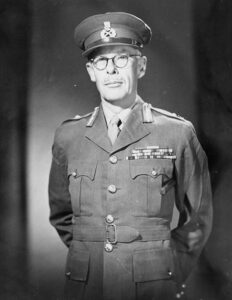 Keith Lindsay Stewart was born at Timaru on 30 December 1896, the son of David Stewart, a bank manager, and his wife, Charlotte Maud Fuller. He attended Napier Boys’ High School from 1905 to 1911 and Wanganui Collegiate School from 1912 to 1914, before successfully applying for admission to the Royal Military College of Australia at Duntroon, which he entered on 12 March 1914. He had a pronounced stutter.
Keith Lindsay Stewart was born at Timaru on 30 December 1896, the son of David Stewart, a bank manager, and his wife, Charlotte Maud Fuller. He attended Napier Boys’ High School from 1905 to 1911 and Wanganui Collegiate School from 1912 to 1914, before successfully applying for admission to the Royal Military College of Australia at Duntroon, which he entered on 12 March 1914. He had a pronounced stutter.
Stewart graduated early in April 1916 to join the New Zealand Expeditionary Force, but did not leave New Zealand until 7 June 1917. In September he became adjutant of the New Zealand Training Units and Depots in Egypt, in which capacity he served until December 1918. He was later posted to the headquarters of the Australian and New Zealand Mounted Division, and was made an MBE for his service in Egypt. On his arrival back in New Zealand in December 1919 he resumed his career in the New Zealand Staff Corps, initially as staff officer to the general officer commanding the New Zealand military forces. On 5 September 1922 he married Rita Florence Moss at Wellington; they would have a son and a daughter.
After serving as a staff officer in Palmerston North, Stewart went to Britain to attend a two-year course at the Staff College at Camberley. Having successfully completed this course, he attended another, before returning to New Zealand in September 1930. Soon afterwards he was appointed as staff officer in the Ceylon Defence Force, but was disappointed to find his duties initially below his training. He managed to extend his role, however, and eventually completed a congenial and professionally valuable posting. Described as ‘an officer of sound judgement, tact and general ability of a high order’, he was made an OBE for his services.
Following his return to New Zealand in October 1934, Stewart was posted to Dunedin, where he served as brigade major of the 3rd Mounted Rifles Brigade and as staff officer in charge of the local regimental district, again drawing consistently favourable reports from his superiors. In 1937 he became general staff officer in the headquarters of Southern Command in Christchurch. On the outbreak of the Second World War he was immediately called to Wellington as general staff officer (training and staff duties) at Army Headquarters.
Posted to 2NZEF, Stewart left New Zealand with the 1st Echelon on 5 January 1940. Until 20 October 1941 he was a senior staff officer in the headquarters of 2nd New Zealand Division. During the battle of Crete he served, with the rank of brigadier, as the chief staff officer in the headquarters of the commander of the Allied forces on the island, Major General B. C. Freyberg. These services earned him a mention in dispatches and appointment as a DSO. With his health impaired, he returned to New Zealand at the end of 1941 to become deputy chief of the general staff.
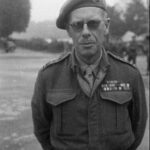 In July 1943 Stewart returned to the Middle East, where he assumed command of 5th New Zealand Infantry Brigade. Between November 1943 and March 1944 he commanded 4th New Zealand Armoured Brigade, before returning to 5th Brigade. For this service he would later be again mentioned in dispatches. On 1 August 1944, while making a reconnaissance of forward positions, he was taken prisoner of war. He was held in Germany until liberated in March 1945. During the brief period before the arrival of Allied forces, he assumed control of the town of Giessen. By July 1945, with his hopes of finding another position with 2NZEF dashed, he was back in New Zealand, where he was made a CBE. Appointed to command the New Zealand troops who were to take part in the Allied occupation of Japan, he returned to the Middle East yet again in October 1945 to take command of 9th New Zealand Infantry Brigade, and proceeded with it to Japan in early 1946. Stewart’s war service, for which he was awarded the Greek Military Cross and made an officer in the US Legion of Merit, ended with his relief in July 1946.
In July 1943 Stewart returned to the Middle East, where he assumed command of 5th New Zealand Infantry Brigade. Between November 1943 and March 1944 he commanded 4th New Zealand Armoured Brigade, before returning to 5th Brigade. For this service he would later be again mentioned in dispatches. On 1 August 1944, while making a reconnaissance of forward positions, he was taken prisoner of war. He was held in Germany until liberated in March 1945. During the brief period before the arrival of Allied forces, he assumed control of the town of Giessen. By July 1945, with his hopes of finding another position with 2NZEF dashed, he was back in New Zealand, where he was made a CBE. Appointed to command the New Zealand troops who were to take part in the Allied occupation of Japan, he returned to the Middle East yet again in October 1945 to take command of 9th New Zealand Infantry Brigade, and proceeded with it to Japan in early 1946. Stewart’s war service, for which he was awarded the Greek Military Cross and made an officer in the US Legion of Merit, ended with his relief in July 1946.
Stewart resumed his regular career in Wellington on 1 September 1946 as adjutant general and second military member of the Army Board. He was appointed a CB in 1947. On 1 April 1949 he became chief of the general staff and first military member. He was also commander of the New Zealand Division. Stewart was heavily involved in the development of plans for the dispatch of a new expeditionary force to the Middle East should war break out with the Soviet Union. During 1950 he became embroiled in a dispute with the prime minister, Sidney Holland, over the urgency with which these plans should be advanced in the existing international situation. Holland objected to Stewart’s attempts to pressure his government into a rapid decision. Relations were restored after Stewart apologised, and he and Holland co-operated amicably over the development of a New Zealand response to the crisis which erupted in Korea in June 1950.
Holland’s antipathetic feelings probably account for his government’s failure to follow precedent in awarding Stewart a knighthood when he relinquished his posts on 31 March 1952. It was not until 1958, under a Labour administration, that Stewart was appointed a KBE.
In retirement Stewart took up residence in Kerikeri. Posted to the retired list in 1954, he served as colonel of the lst Armoured Regiment until 1959. He died at Kawakawa on 13 November 1972, survived by his wife and children.
(Ian McGibbon. ‘Stewart, Keith Lindsay’, Dictionary of New Zealand Biography, first published in 2000. Te Ara – the Encyclopedia of New Zealand, https://teara.govt.nz/en/biographies/5s45/stewart-keith-lindsay (accessed 4 August 2020))
The following appeared in the 1965 School Yearbook. (At least one of the dates is inaccurate – Maj Gen Stewart was the Class Patron in 1961, not 1962):
Military Arts
A wee poem from my memoir about going AWOL:
Disappearances at night
Cadet NCOs were also recruited to give us the ‘don’t go AWOL’ message. This didn’t always work the way it was supposed to. One lance-corporal, having lectured his section one night about the futility of going AWOL, decided he didn’t really believe it himself and was missing from his bed the next morning.
‘OK, you all know that M________ and N_________ decided to leave us last night, so I need to remind you of what can happen if you go AWOL. You will:
- get picked up by the police pretty quickly
- do CB for the number of days you are missing
- spend an even longer spell in Ardmore.’
‘If you don’t know it already, Ardmore is ten times worse than here, minus the mountain scenery.
So, don’t break ranks and bugger off – August leave is only five weeks away.’
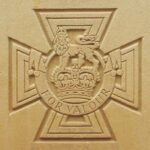 Cadet Class Trivia
Cadet Class Trivia
- How many Class Patrons were VC holders and what are their names?
- How many sets of Classes have the same name and which are they?
- Which Class Patron was the first Sergeant Major of the Army, in what Class did he join Cadets, and for what year was he Class Patron?
